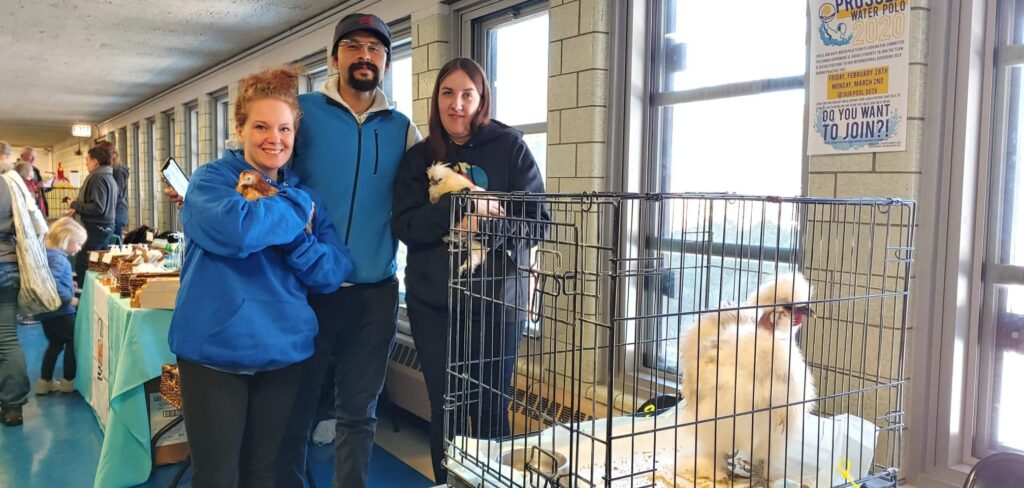
Introduction
The microsanctuary movement is grounded in the belief that building one’s life around the well-being of nonhuman animals is central to veganismA movement and way of living that seeks to eliminate the exploitation of and cruelty to nonhuman animals as much as possible. Often, veganism is defined synonymously with a plant-based diet, although veganism includes abstaining from elements of animal exploitation in non-food instances when possible and practicable as well.. In this way, microsanctuaryA microsanctuary is a small scale community of human and nonhuman (generally “unconventional or farmed”) animal companions, who live together in a chosen shared lifestyle and in commitment to ending the oppression of all beings. Microsanctuaries adhere to the notion that no nonhuman member of the community should “serve a purpose.” Microsanctuaries can exist in any context: rural, suburban, or urban. A microsanctuary can consist of as small a community as one animal and one human caregiver. For more information on microsanctuary please refer to the Microsanctuary Resource Center. is more than just providing care for one or a small number of nonhuman animals. It’s also about creating and nurturing community around animal liberationA social movement dedicated to the freeing of nonhuman animals from exploitation and harm caused by humans., animal care, and mutual aid through education and outreachAn activity or campaign to share information with the public or a specific group. Typically used in reference to an organization’s efforts to share their mission. efforts with whatever resources are available. While common outreach and education efforts from macrosanctuariesMacrosanctuaries are large-scale communities of nonhuman (generally “unconventional or farmed”) animal companions and multiple human caregivers who do not typically share the same living space. Due to land requirements and zoning restrictions pertaining to certain species and larger resident numbers, macrosanctuaries typically exist in more rural settings. Macrosanctuaries adhere to the notion that no nonhuman member of the community should “serve a purpose” and are committed to ending the oppression of all beings. The term "macrosanctuary" has its origins in the The Open Sanctuary Project's desire to distinguish the microsanctuary and macrosanctuary communities. Although they serve a similar purpose, microsanctuaries and macrosanctuaries are inherently different in various ways. can be and have been emulated on a “micro” level, there is a distinct difference between the interaction that can happen with respect to a macrosanctuaryA macrosanctuary is a large-scale community of nonhuman (generally “unconventional or farmed”) animal companions and multiple human caregivers who do not typically share the same living space. Due to land requirements and zoning restrictions pertaining to certain species and larger resident numbers, macrosanctuaries typically exist in more rural settings. Macrosanctuaries adhere to the notion that no nonhuman member of the community should “serve a purpose” and are committed to ending the oppression of all beings. The term "macrosanctuary" has its origins in the The Open Sanctuary Project's desire to distinguish the microsanctuary and macrosanctuary communities. Although they serve a similar purpose, microsanctuaries and macrosanctuaries are inherently different in various ways. and the interaction that can happen with respect to a microsanctuary. This is in large part due to how they are uniquely positioned with respect to things like geographical accessibility, funding, organizational structure, philosophy, and more. Fortunately, when it comes to designing and facilitating educational and outreach efforts for microsanctuariesMicrosanctuaries are small scale communities of human and nonhuman (generally “unconventional or farmed”) animal companions, who live together in a chosen shared lifestyle and in commitment to ending the oppression of all beings. Microsanctuaries adhere to the notion that no nonhuman member of the community should “serve a purpose.” Microsanctuaries can exist in any context: rural, suburban, or urban. A microsanctuary can consist of as small a community as one animal and one human caregiver. For more information on microsanctuary please refer to the Microsanctuary Resource Center., there are a number of wonderful ways to provide opportunities for folks to connect with their resident(s) and mission that are well-suited for and can be adapted to their specific needs and capabilities.
When designing an education program, microsanctuaries will first need to ask the right questions to determine what will be most sustainable for their organization in the long-run. Here’s a list of some questions to help you get started:
- What kind of education program is your microsanctuary in the best position to design and facilitate?
- What are your opportunities for education that draw on your microsanctuary’s strengths and interests?
- What financial, technological, spatial, and staffing resources are available to you?
- What educational opportunities are currently being offered in your community or region that you might support and build on?
- What educational opportunities are not being offered in your community that you could start facilitating?
So, what exactly are your options when it comes to educational programming in a microsanctuary setting? The following is a non-exhaustive overview of several different educational opportunities that can be designed for and implemented at your microsanctuary. Though all of them will not be relevant or possible for every organization, each one offers unique learning opportunities and challenges that should be considered prior to planning and implementation.
Educational Programming Opportunities
Storytelling
The question of education targeted for the microsanctuary realm has much to do with the possibility of in-depth storytelling that may only be possible to share from a microsanctuary perspective since they are especially well-positioned to normalize one-on-one life with “unconventional” companions like rescued farmed animalsA species or specific breed of animal that is raised by humans for the use of their bodies or what comes from their bodies., intimately convey the joys of living with such animals, and share close narratives of them as individuals with ongoing lives and experiences in sanctuary.
Virtual Storytelling
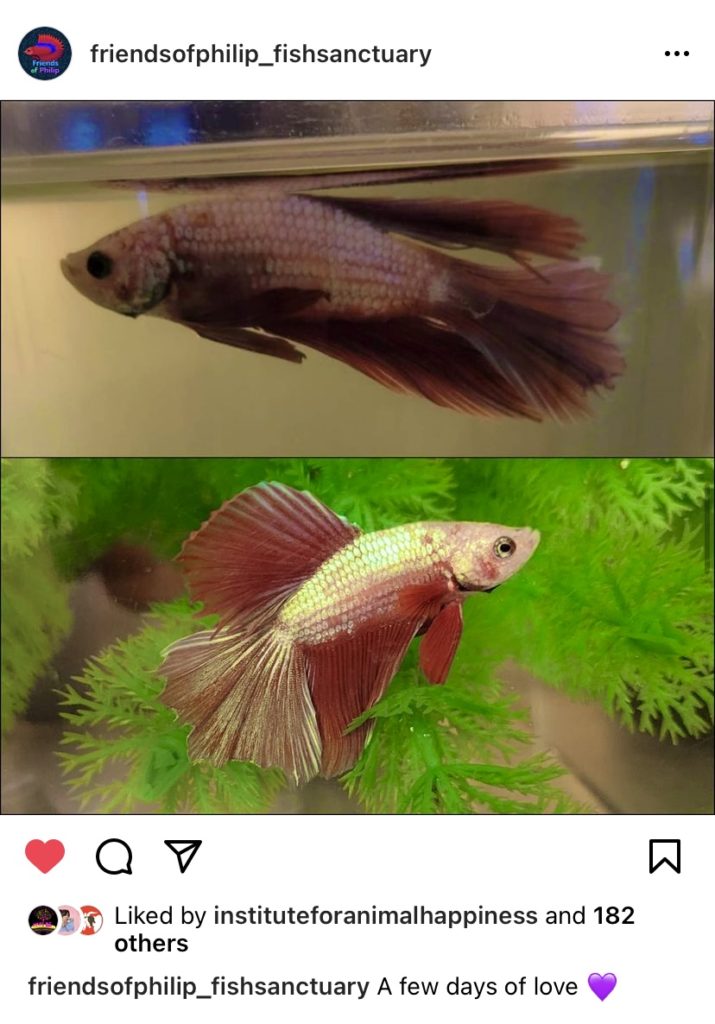
There are a variety of ways microsanctuaries can share their in-depth companion narratives and implement storytelling into their educational programming. One of the most common forms of storytelling we see today is via social media platforms like Instagram and TikTok. This is an exceptionally convenient way for microsanctuaries to educate the public remotely about the lives and issues farmed animals face, particularly because it is fairly accessible and mostly free. Another fun way microsanctuaries can share intimate companion narratives is by creating interactive websites that allow folks to read about, listen to, and engage with individual farmed animals like this one from Camille Licate and her companion rooster Bree.
In-person Storytelling
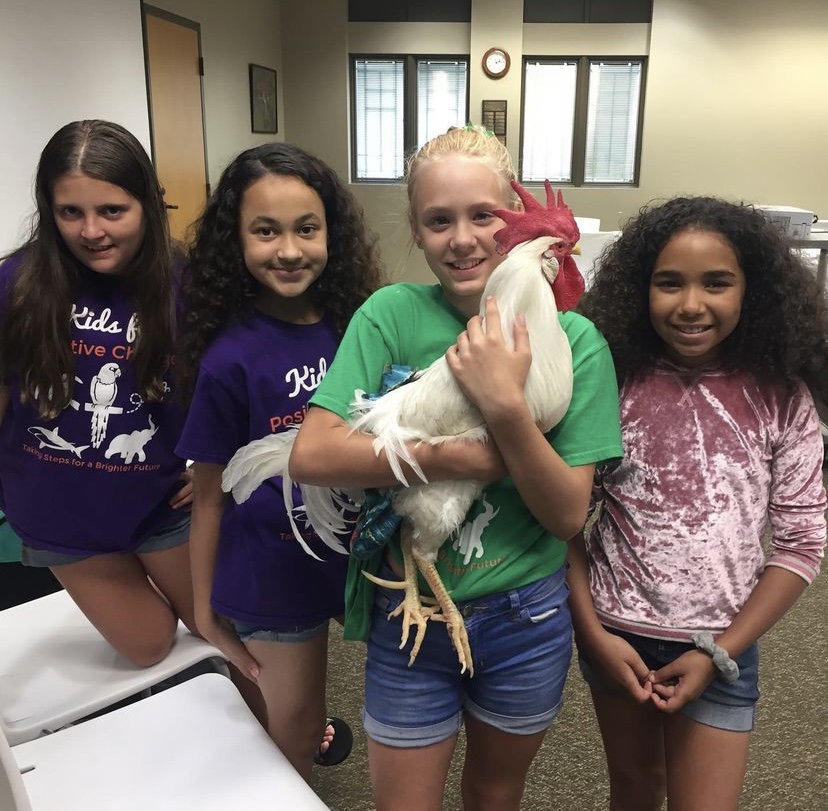
In addition to being well-suited for virtual storytelling, many microsanctuaries are also uniquely suited to share resident stories with their community members in-person, particularly because they are so often located “where people are” in contrast to “where people have to go”, which is often the case for so many macrosanctuaries as a result of things like land requirements and zoning restrictions pertaining to certain species and resident numbers. If onsite tours are a feasible option for your microsanctuary, we have a lot of resources on this topic. Just type the word “tour” into the search bar on our website, and a list of relevant resources will pop up. A good place to start learning more about sanctuary tours is here and here. Otherwise, local libraries, schools, community centers, and veg fests are all offsite places that can offer microsanctuary operators wonderful in-person platforms and spaces to center and share their residents’ stories.
Nonhuman Animal Companions and Consent
Allowing folks to observe and/or interact with animal companions either inside or outside of their sanctuary space should only be done after carefully considering the issue of consent and the interests and needs of each individual. For some animal companions, it’s very clear that they enjoy interacting with humans, and for others, it’s very clear that they do not. Sanctuaries, both “micro” and “macro”, are not petting zoos and it is critical that we respect the autonomyThe ability for individuals to have access to free movement, appropriate food, and the ability to reasonably avoid situations they wish to avoid. and space of our companions to the greatest extent possible. For individuals that do not enjoy interacting with humans, it is possible and can be enjoyable for folks and animals to simply sit and watch one another from a safe distance. Chicago Chicken Rescue, for example, frequently offers their neighbors the chance to sit and watch the birds in their care and get a respite from their day to day life. The same consideration of consent should also be made with regards to animal companions being taken out of their home. For some individuals, it’s very clear that they are comfortable being taken out of their home, and for others, it’s very clear that they are not. Some individuals are comfortable interacting with humans, but uncomfortable being taken away from their home. If one of your companions enjoys being taken away from their home and interacting with humans, please take all the necessary steps to ensure the setting away from home is comfortable and safe for them prior to bringing them there.
A Word of Caution
Extra careful consideration needs to be made for animals that are at any increased risk of stress, illness or injury, including already sick or injured animals, babies, and elderly companions. We would advise against bringing any of these particularly vulnerable individuals outside of their homes and allowing them to interact with human visitors to ensure their safety and the safety of humans. As a general guiding principle, if you feel the slightest bit concerned for an animal’s physical or mental well-being and safety, then you should not allow them to be handled or taken away from their home with the exception of healthcare purposes.
Check Back In!
The Open Sanctuary Project is in the process of developing a resource that will take a much deeper dive into the issue of consent and respectful human-animal interaction, so please check back in! In the meantime, if you have thoughts about this issue that you’d like to share with us, feel free to get in touch with us here.
Individualized Care and Species Specialization
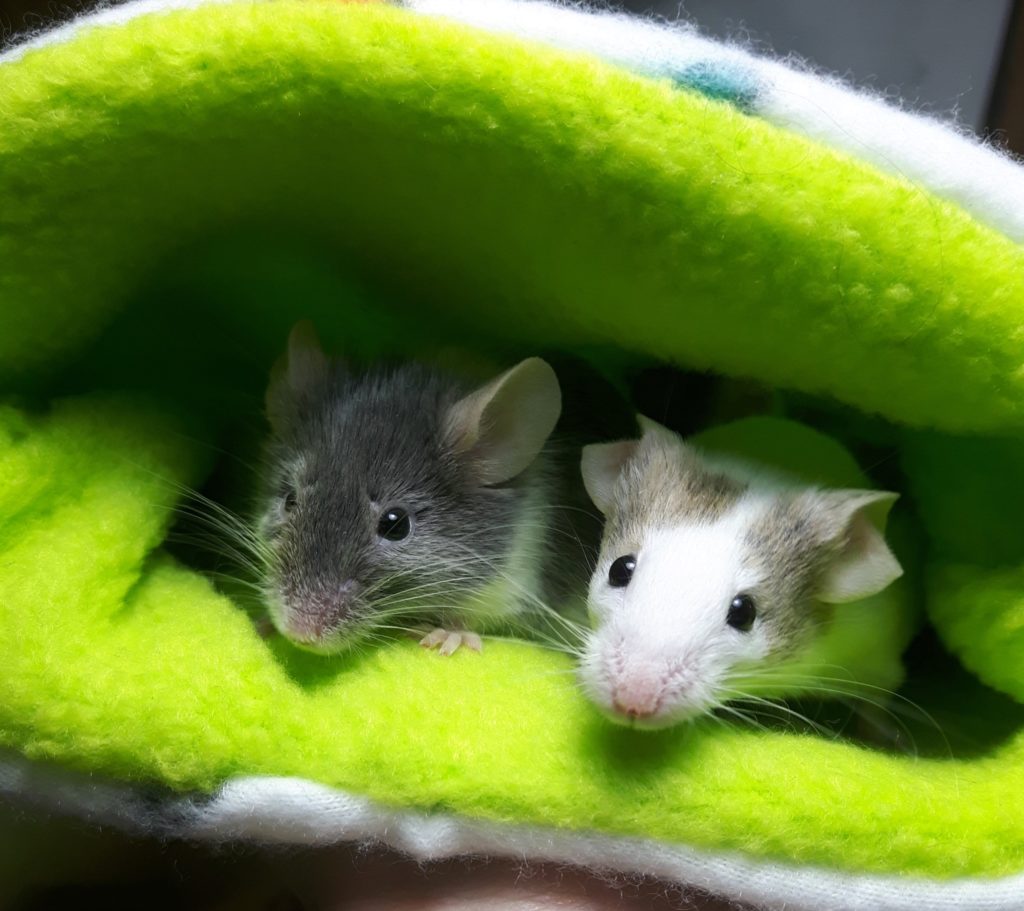
One of the defining characteristics of the microsanctuary movement is the belief that providing sanctuary to a small number of rescued animal companions can be an integrated part of one’s lifestyle, not just a vocation or a job. As a result of this, the microsanctuary model inherently lends itself towards an ability to provide exceptionally individualized care that can and has led to a communal pooling of resources amongst a broader community to share information, vet care experiences, and innovative ideas.
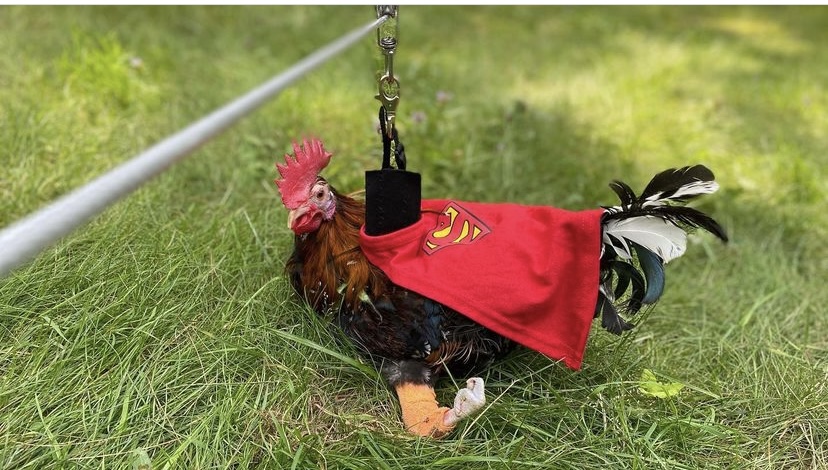
The microsanctuary model of individualized care also lends itself towards an ability to specialize in particular species and particular circumstances (e.g., rodents, fishes, indoor chickens, non-ambulatory birds, etc.) and provide knowledgeable guidance on skilled care for these particular kinds of animals. This is another aspect of microsanctuary that is a key driver of care innovation that can better the lives of animals in all sanctuary settings. Sharing educational resources on individualized and species-specific care is an educational opportunity that is well-suited for microsanctuaries. If you are a species-specific microsanctuary operator, what kinds of educational resources, spaces, and caregiving guidance might you develop for your community? Local libraries and community centers can offer great platforms for in-person workshops, while social media and websites can offer various platforms for online webinars and workshops. You might also consider creating written resources such as brochures for your local community members on how to start a microsanctuary in your specific region. For example, you could develop and share a checklist of things folks should consider and do if they are interested in joining the microsanctuary movement in your area (e.g., local zoning regulations, noise ordinances, and sanitation and waste disposal regulations, ways to build positive community relations with landlords, neighbors, and local business owners, etc.).
Art as Community Education and Activism
For me, the art impulse is something that acts as a kind of fuel and can imbue the work [at The Institute for Animal Happiness] with more of a sense of joy. It helps people visiting engage with the concepts of animal liberation in a different indirect but powerful way. On a more superficial note, it acts as a vibrant energy that draws more eyes to our work here when we share photos, but then the hope is it helps people delve deeper into AR/Vegan concepts and into learning about non-humans via channels that capture the emotions around who they are, not just the facts and figures…[Our microsanctuary art activism] has developed organically over so many years and most of what we do, we do with extremely limited resources (e.g., volunteers, recycled materials, etc.) as we are small as an organization.
– Rebecca Moore, FounderSomeone who starts an organization. A Founder may or may not also be the Executive Director of an organization. and Director of The Institute for Animal Happiness

Art is a powerful form of communication and storytelling and another creative way for microsanctuaries to bring visibility and awareness to the issues that farmed animals face in their local communities. Some opportunities to utilize art as a tool for your microsanctuary’s educational programming and activism include:
Installation Art
Installation art is generally a larger-scale, mixed-media form of expression or message that is often designed for a specific place and for a temporary period of time, though it can be permanent! Installation art can be a wonderfully creative way for microsanctuaries to display their message for visitors to find and contemplate.
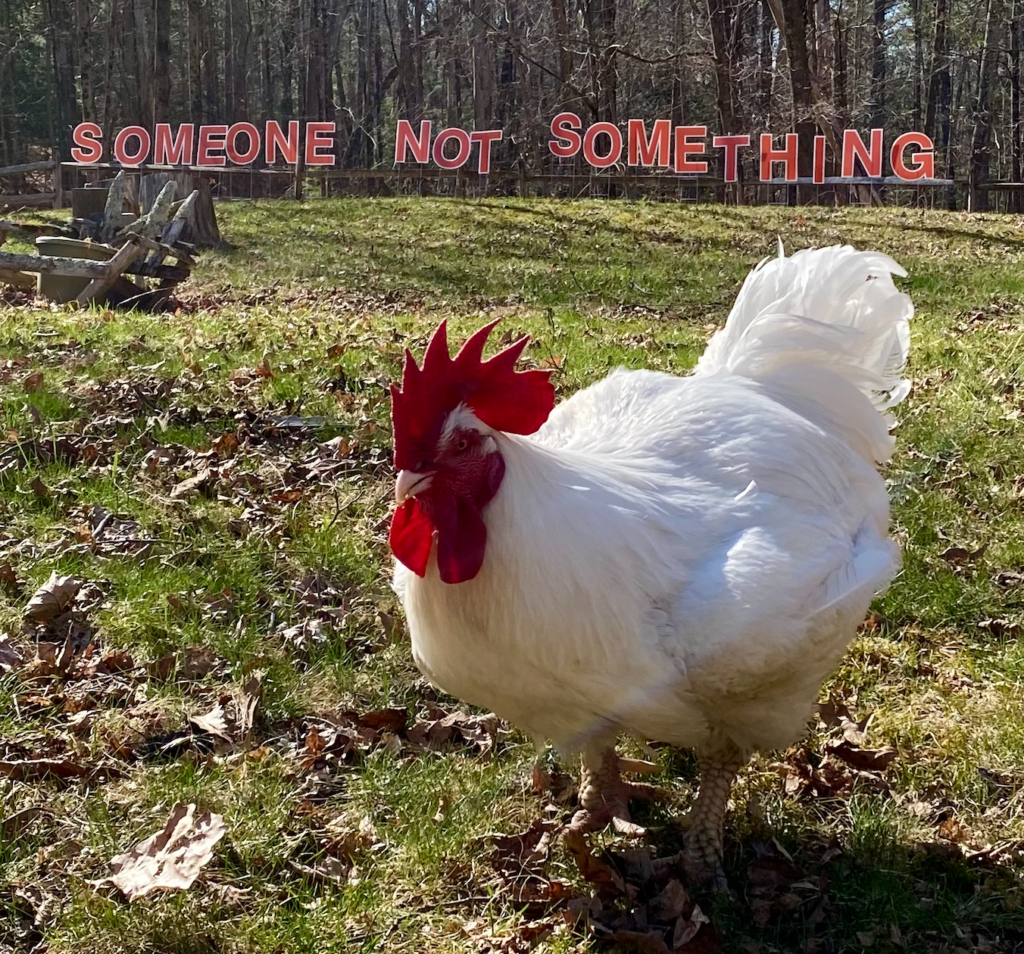
Poster Art
Creating eye-catching educational posters is another fun way to share your microsanctuary’s work and message with local residents and beyond. You can distribute them for a choice of donation or for free throughout your community at places like local libraries, schools, and cultural/creative spaces, as well as to other organizations doing work similar to yours.
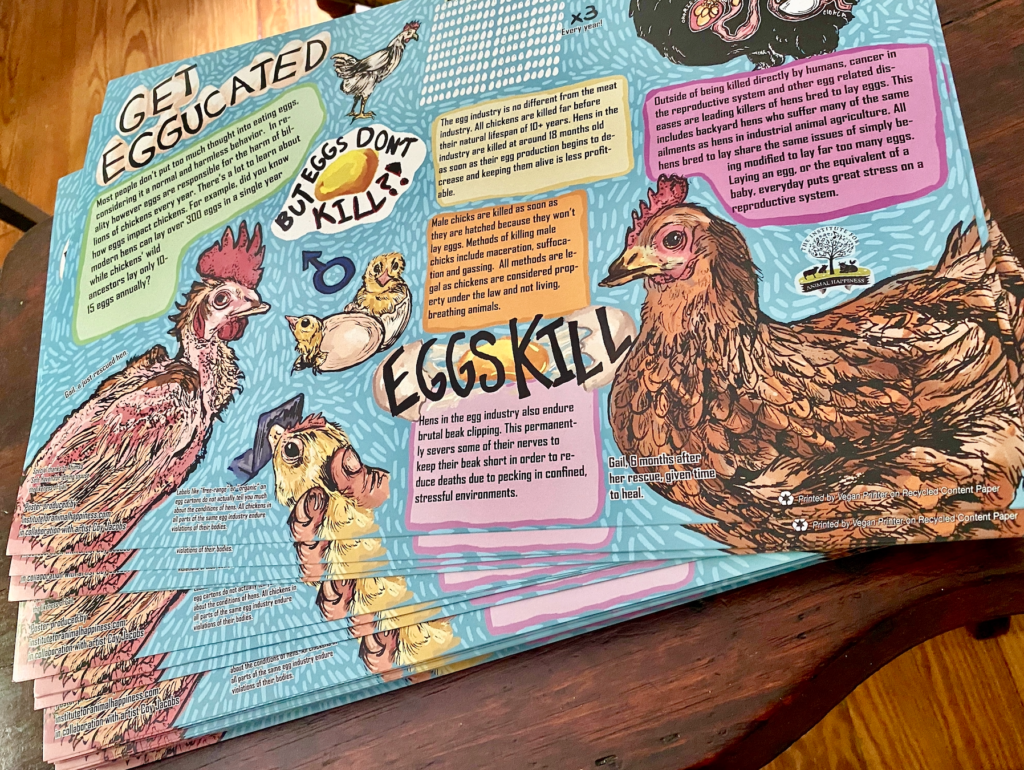
Sip and Paint Sessions
If you have space in your microsanctuary to invite folks over, you could consider offering them a chance to hang out, quietly observe your residents, drink something refreshing, and even make art inspired by them! If you don’t have space at your microsanctuary to do this and you have residents that don’t mind leaving their home or enclosure for short periods of time, you might also consider finding a safe and comfortable community space for them to hang out so folks can partake in a similar fun observational experience.
Educational Videos
Educational videos can be a super fun way to educate your community about specific topics they would be interested in. Educational videos can come in many different styles, lengths, and topics, but they all typically seek to tackle important questions and deliver reliable and relevant information that their audience will find worthwhile.
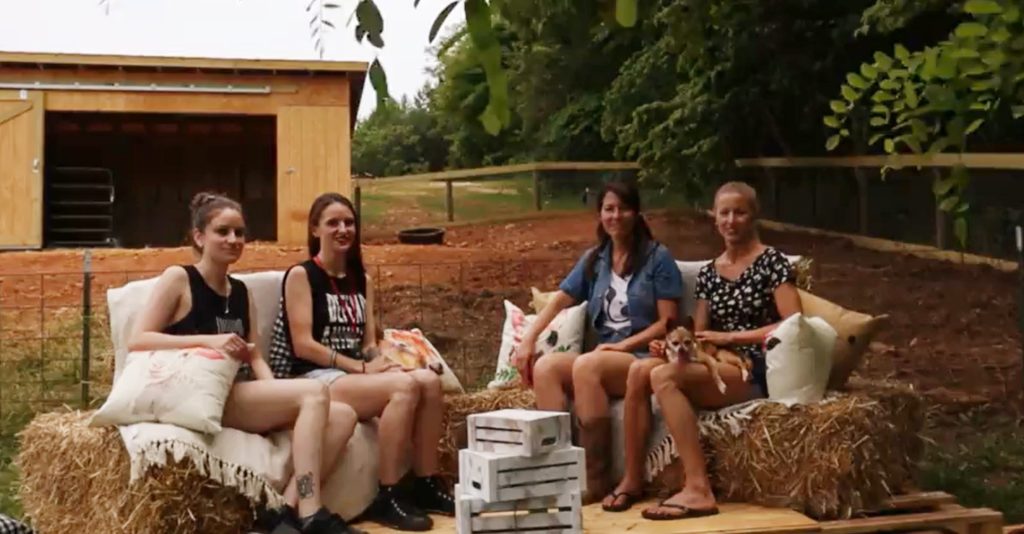
Podcasts
If you have the resources to create and host your own podcast, this can be an excellent way to educate folks about your mission and build community. If you don’t have the bandwidth to create your own, consider reaching out to podcasts that already exist to see if you can be a guest speaker on there and educate the public about your mission that way!
Music
If your microsanctuary has musical talent on staff, consider creating and sharing music with your community members that inspires positive change for nonhuman animals. Check out Larry Rooster’s (aka Rebecca Moore from The Institute for Animal Happiness) “Animal Anthem” for inspiration!
Coloring Books
If your microsanctuary has drawing talent on staff or knows a talented artist who would like to contribute to your work, consider creating and sharing a coloring book with your community members that highlights the stories and lives of your residents and organization!
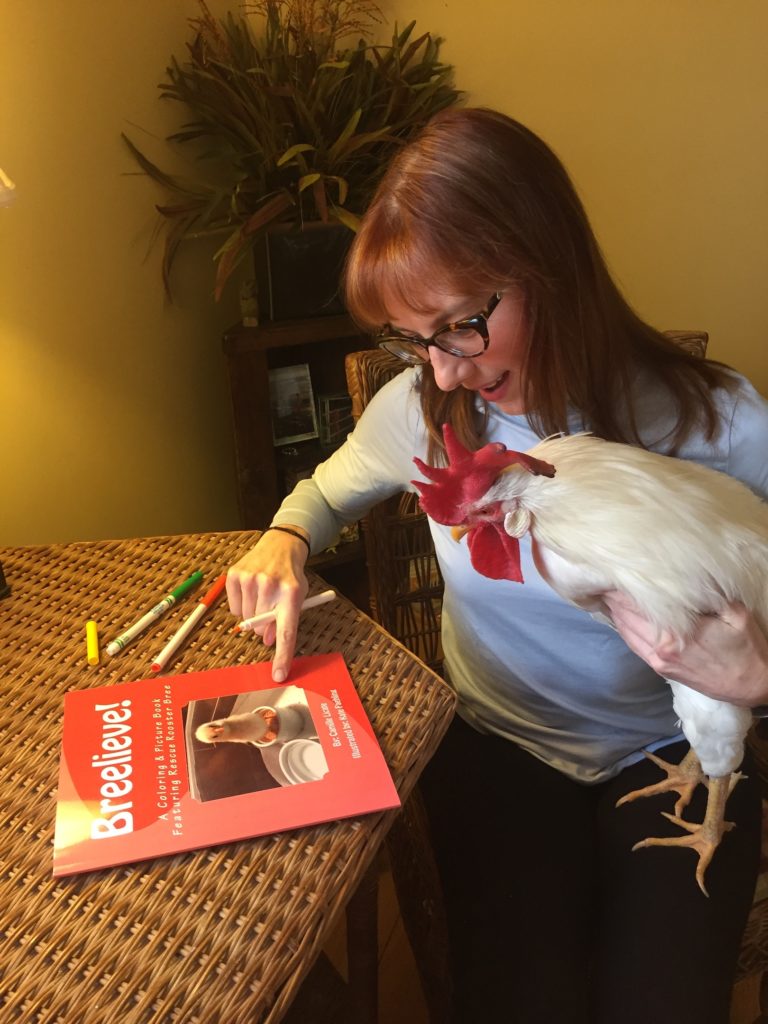
Community Wall Murals
A wall mural is a large piece of art that covers a wall and can include many different messages, ideas, images, and styles. Be sure to check with your local laws around exterior painting permits as well as your City Council for approval of murals on public property your microsanctuary might consider creating. Painting wall murals on private property without expressed permission is also illegal.
Wheatpasting
Wheatpaste is a gel or liquid adhesive made from wheat flour or starch and water that is often used by artists and activists to adhere paper posters and notices to walls. Wheatpasting tends to fall into a legal gray area since it’s not permanent, does not use harmful chemicals, and is biodegradable. However, it’s important to check on your local laws and ordinances if your microsanctuary is considering wheat pasting in a public space. Wheatpasting on private property without expressed permission is illegal.
Mutual Aid Efforts
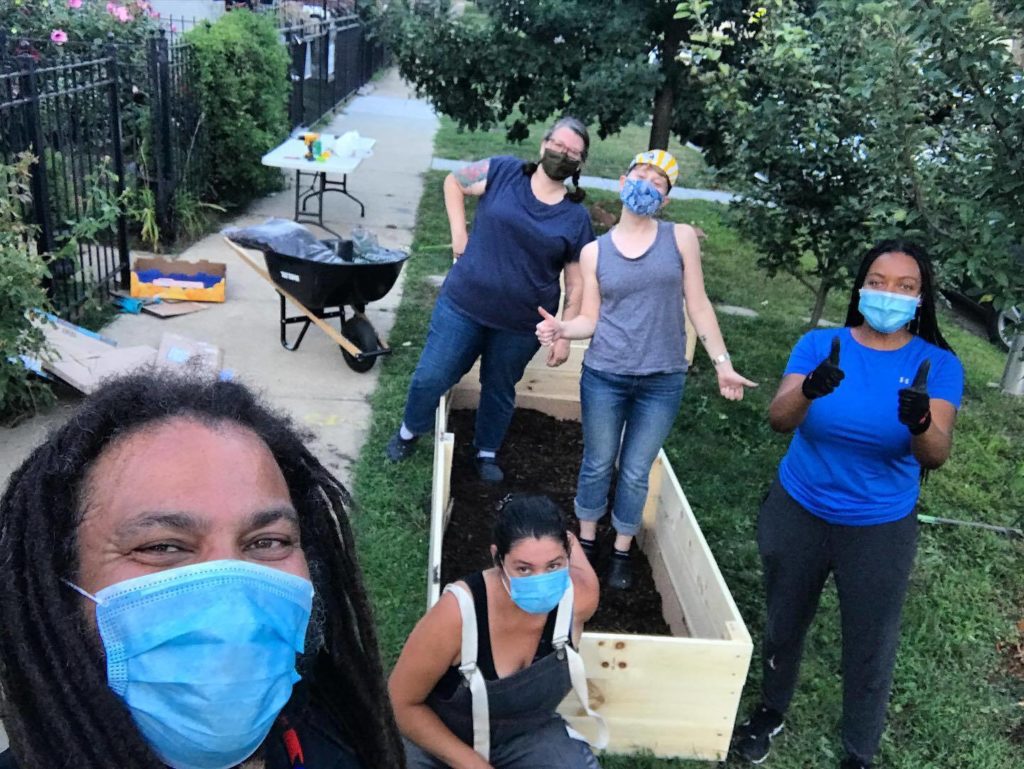
Microsanctuaries are key spaces and drivers for thinking about community and collective approaches to caregiving, education, outreach, resource sharing, and support, particularly because they often involve a single caregiverSomeone who provides daily care, specifically for animal residents at an animal sanctuary, shelter, or rescue. with no form of institutional support. This is of particular importance for microsanctuaries operating in urban settings, but is of course also relevant and meaningful for microsanctuaries operating in suburban and rural settings as well. Mutual aid efforts from a microsanctuary education perspective might look like:
Microgardening/Community Gardening
Developing and nurturing microgardens can be a wonderful way for microsanctuaries to build meaningful relationships with other local residents and benefit the lives of both humans and nonhuman animals in the form of physical and emotional enrichment. It’s important, however, to remember to consider the issue of consent when it comes to nonhuman animals in these kinds of spaces. For example, if your microsanctuary is building a microgarden and is thinking about utilizing used-chicken bedding or manure as compost for your garden or inviting local residents to participate in your microgarden, your chicken companions should not be considered “inputs” without their consent. Microgardens/community gardens being operated by microsanctuaries who adhere to the notion that no nonhuman member of the community should “serve a purpose” are distinct from community garden spaces that utilize and perceive nonhuman members such as chickens as inputs without their consent. As a microsanctuary, it is critical that you consider the interests and needs of the individual: do your chicken companions enjoy scratching and dust bathing in the garden dirt while you and/or others pick tomatoes off the vine? If so, perhaps those chickens would be great community garden buddies!
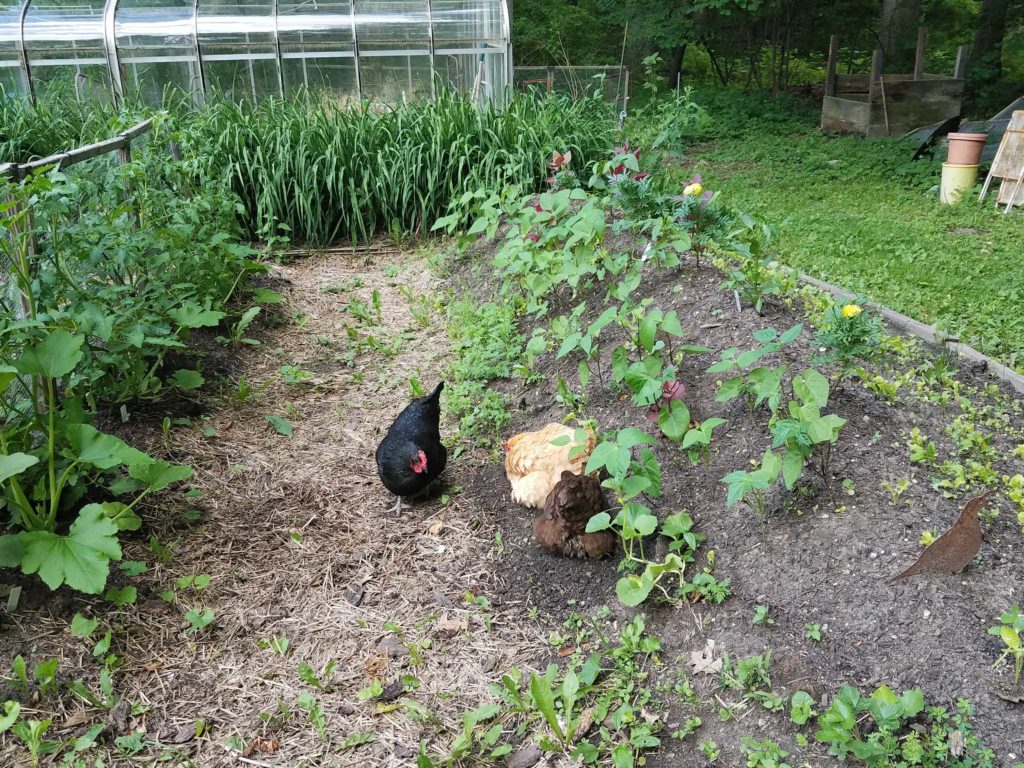
Vegan Food Shares
Consider creating veganAn individual that seeks to eliminate the exploitation of and cruelty to nonhuman animals as much as possible, including the abstention from elements of animal exploitation in non-food instances when possible and practicable as well. The term vegan can also be used as an adjective to describe a product, organization, or way of living that seeks to eliminate the exploitation of and cruelty to nonhuman animals as much as possible (e.g., vegan cheese, vegan restaurant, etc.). food share opportunities where members of your community can take and leave vegan food or other essential items and help increase food security and educational awareness around veganism and animal liberation. Food sharing can come in many different forms: community pantries, cabinets, refrigerators, food carts, delivery services, gardens, and more!
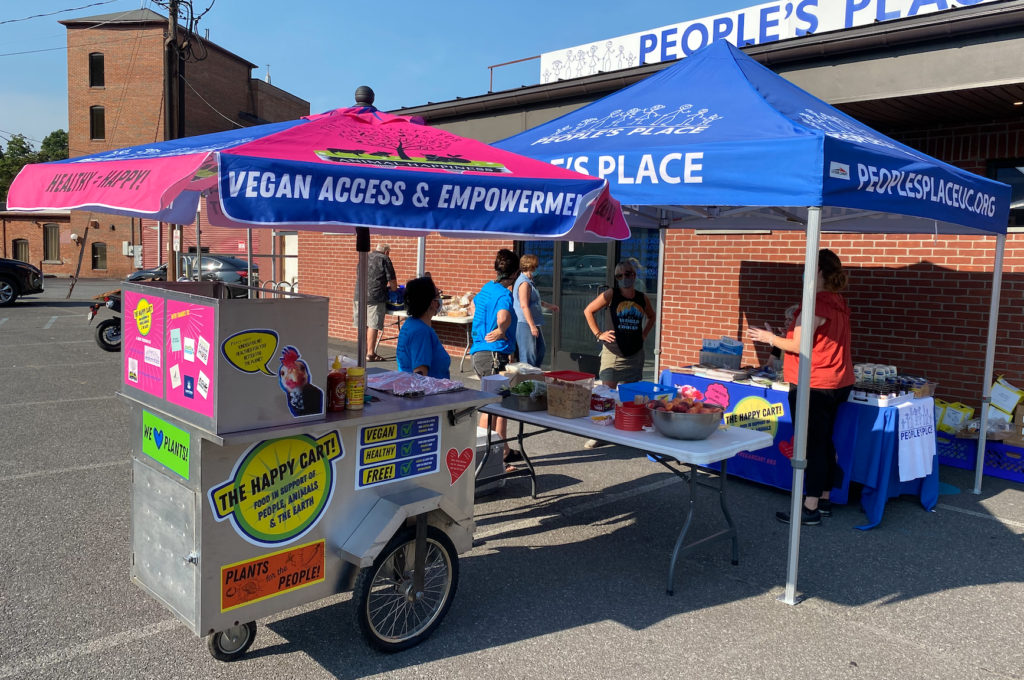
Study Groups and Telegram Communities
These are groups that can be set up for discussing theory around nonhuman animal liberation and participating in microsanctuary networking and mutual aid efforts. The Radical Companionship Project created such a network using Telegram. Groups like this can also be set up on other remote platforms such as Slack and Google Groups.
Community Forums
Microsanctuary operators are also often well-positioned for participation in community forums (e.g., Vegans with Chickens forum) and discussions with a wider variety of people because they don’t have as many or any institutional constraints. This microsanctuary flexibility can lend itself more easily to trying new things, listening to and implementing others’ standards, and pushing for higher care standards in unexpected ways. Might you be the next “VegansIndividuals who seek to eliminate the exploitation of and cruelty to nonhuman animals as much as possible, including the abstention from elements of animal exploitation in non-food instances when possible and practicable as well. with [insert animal you specialize in]” community forum administrator?!
Conclusion
Deciding what kind of educational programming to design and facilitate at your microsanctuary is an exciting and challenging task. Hopefully, this resource can serve you as a foundational well-spring of creative ideas and opportunities to offer your community. As with every decision you make, your microsanctuary’s missionThe stated goals and activities of an organization. An animal sanctuary’s mission is commonly focused on objectives such as animal rescue and public advocacy., core values, strengths, and constituents will help guide you in your education and outreach efforts. They will be your compass.
Article Acknowledgements
This resource could not have been created without the pioneering work and shared knowledge of Triangle Chicken Advocates, Chicago Roo Crew, The Institute for Animal Happiness, Bree and Me Rooster, Friends of Philip Fish Sanctuary, Carrot Creek Critters Sanctuary, and Hogs and Kisses Farm Sanctuary. We are so grateful for their contributions.
A Note on Sanctuary Endorsements
While The Open Sanctuary Project appreciates the countless individual sanctuaries and rescues around the world, as well as the unique and effective strategies they have developed and put into practice for management, compassionate animal care, and education, please note that we do not endorse or provide accreditation to any organizations. We may link to a sanctuary’s website, share illustrative photos from a sanctuary with their permission, or reference sanctuaries’ practices and policies as examples of certain effective methods or as additional resources, but this should not be construed as an endorsement of every policy and practice of any one particular sanctuary.








